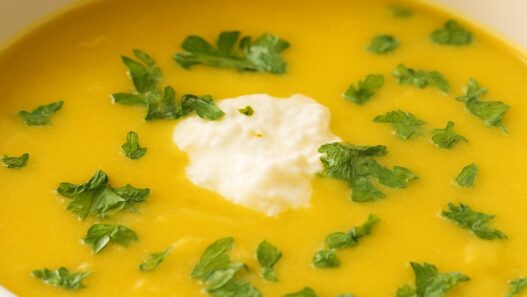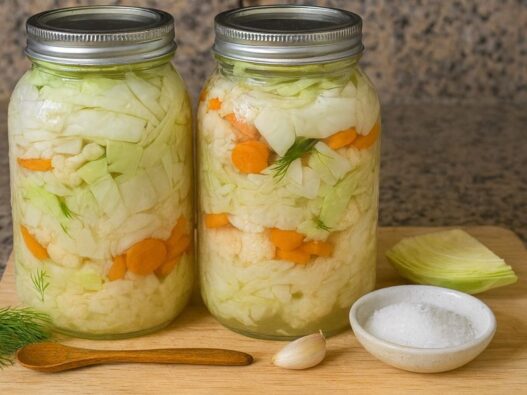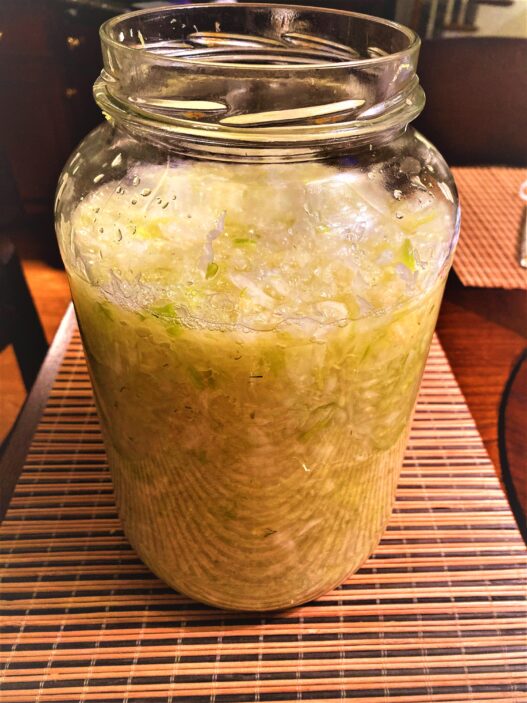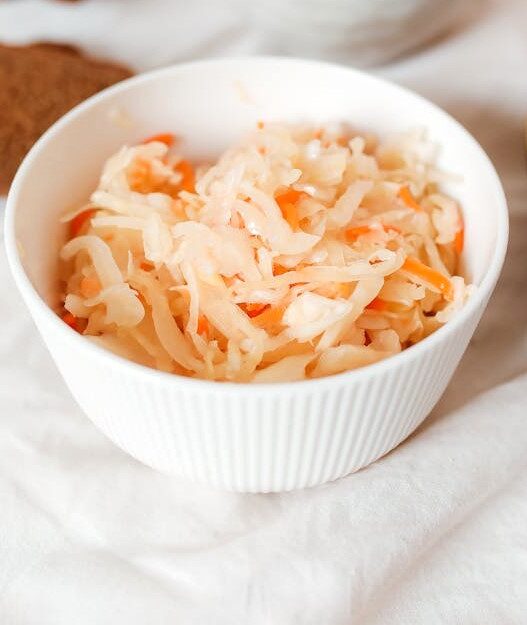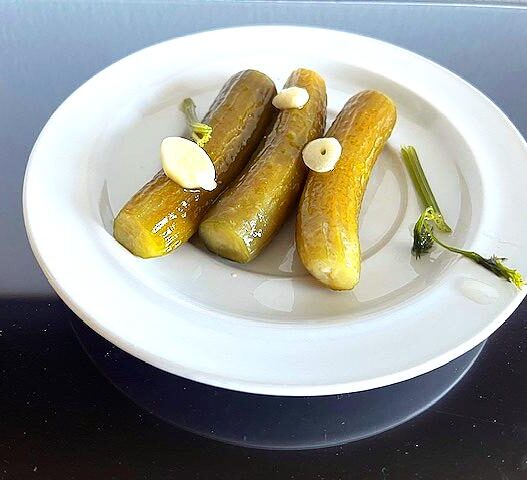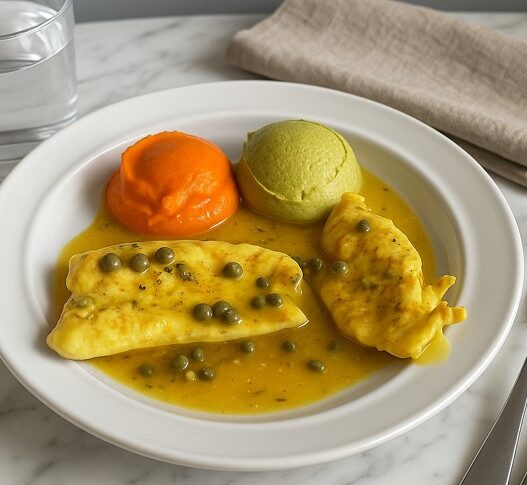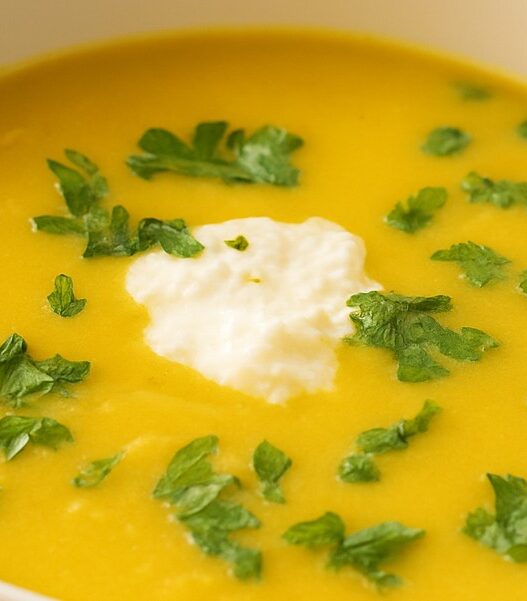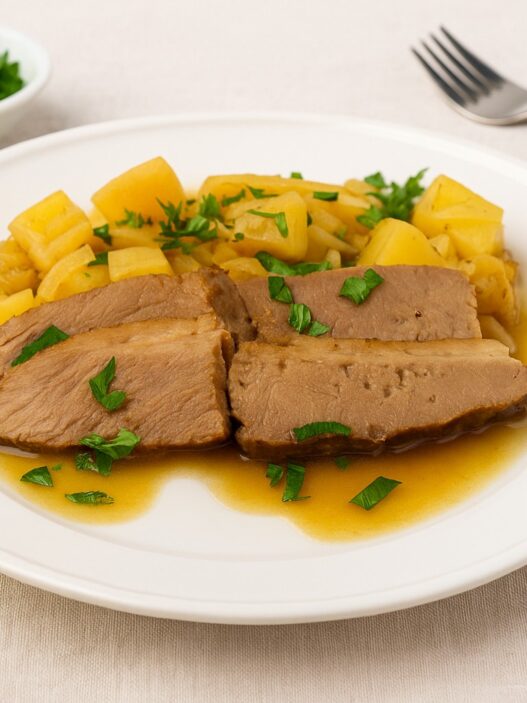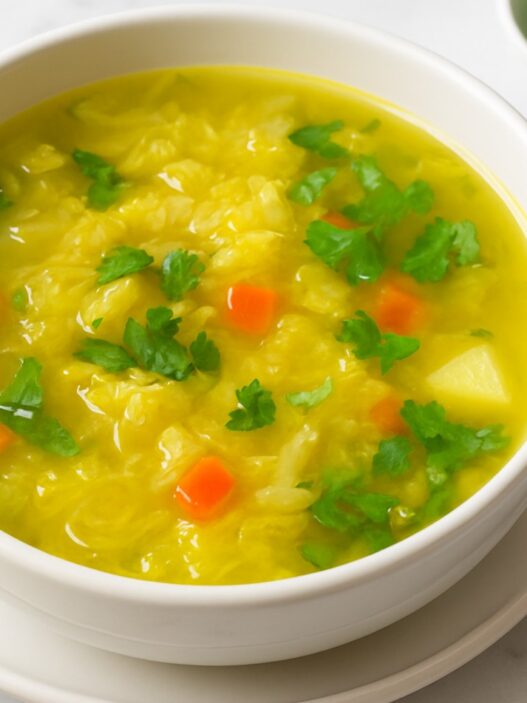Homemade Fermented Vegetables, an Immune System Gold Mine
When I think back to my childhood in Romania, there was hardly a main course without a jar of fermented vegetables on the table. Whether it was cabbage, carrots, cauliflower, or even green tomatoes, the tangy crunch always made a meal feel complete. That tradition inspired me to make this Homemade Fermented Vegetables recipe. It brings together cabbage, carrots, and cauliflower with dill, garlic, and horseradish. The brine does the rest, creating a probiotic-rich side dish that connects me to my roots while supporting gut health today.
Why You’ll Love This Recipe
Homemade Fermented Vegetables are easy to prepare. They require only a few ingredients, no fancy equipment, and just a little patience. You will love the crisp texture, the tangy flavor, and the way the dill and horseradish add depth. Because it’s AIP-friendly, gluten free, and dairy free, it fits many lifestyles. Once you taste them, you may find yourself keeping a jar in the fridge at all times.
Health Benefits of Homemade Fermented Vegetables
These vegetables are more than delicious. Fermentation creates probiotics, which help restore balance in the gut microbiome. Research shows probiotics may improve digestion, enhance immune function, and reduce inflammation (study here). Cabbage provides vitamin C and antioxidants. Carrots bring beta-carotene, which supports eye health. Cauliflower offers fiber and compounds that protect cells.
In my book From Pain to Wellness: Overcoming Autoimmune Diseases, an Undisclosed Epidemic, I share how gut health is a cornerstone of healing. This simple jar captures that idea beautifully.
Want updates when I publish new blogs or recipes?
Ingredients and Nutrient Highlights
This Homemade Fermented Vegetables recipe combines cabbage, carrots, and cauliflower. Together they supply fiber, vitamins A, C, and K, and minerals like potassium and calcium. Garlic and horseradish contribute natural antimicrobial compounds that support the fermentation process and add flavor. Dill is more than garnish — it delivers antioxidants and a fresh aroma. All of these ingredients come together in a 3% saltwater brine that preserves the vegetables and builds probiotics over time.
Serving Suggestions
Homemade Fermented Vegetables pair with almost anything. Serve them alongside roasted meats, add them to grain-free wraps, or enjoy them as a snack straight from the jar. They also brighten soups or stews, offering crunch and tang without extra cooking. In Romania, we enjoyed them next to hearty meals, but you can use them to lighten even simple weeknight dinners.
Storage Instructions
Once fermented to your liking, move the jars to the refrigerator. Homemade Fermented Vegetables will continue to develop flavor slowly while staying crisp. Stored cold and submerged in brine, they will keep for several months. Always use a clean utensil when serving to maintain freshness.
Optional Add-ins or Variations
You can play with the flavor. Add bay leaves for a subtle aroma or grape leaves for extra crunch. Swap in turnips or zucchini for variety. Use different herbs, like thyme or celery leaves, to make the ferment your own. Every batch can have its own personality while staying true to the foundation of Homemade Fermented Vegetables.
Allergen Notes
This recipe is naturally gluten free, dairy free, soy free, and nut free. It also fits the AIP elimination phase. Skip the garlic if it triggers symptoms, since the recipe works well without it.
Nutritional Information
One serving of Homemade Fermented Vegetables (about 100 g) provides roughly 30–40 calories, 2 g fiber, 1–2 g protein, and a mix of vitamins A, C, and K. Sodium levels depend on the brine but remain moderate when eaten as a condiment. The true nutritional power comes from probiotics, which support gut health and immune function.
Try making your own Homemade Fermented Vegetables and see how simple it can be to bring probiotic-rich foods into your life.
If you make this recipe, share your experience in the comments. And if you’re looking for more gut-healing, AIP-friendly recipes, subscribe to my newsletter for new ideas each week.
Some other gut-healing recipes:
Want updates when I publish new blogs or recipes?
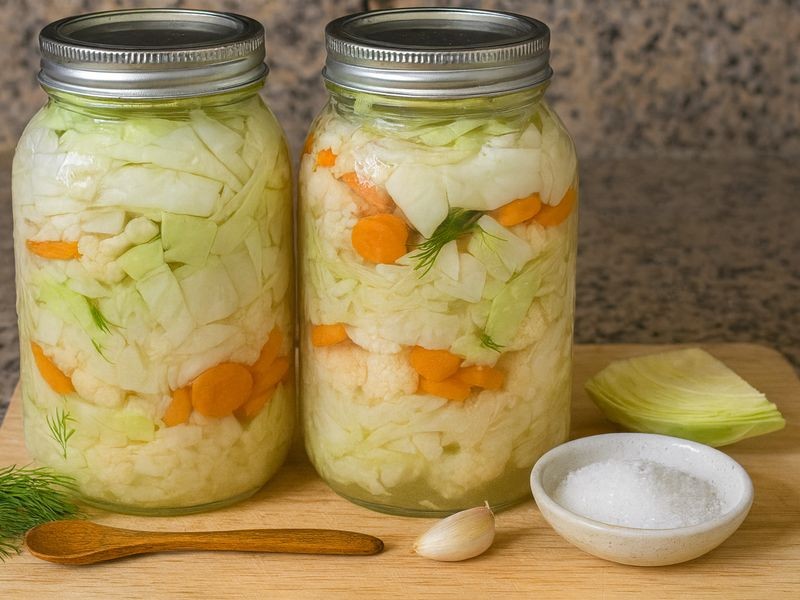
Homemade Fermented Vegetables
Method
- Dissolve salt fully in filtered water, preferably while boiling the water. Let the water cool completely to room temperature. This is very important!
- Divide veggies, garlic, dill, and horseradish evenly between 2 half-gallon jars. Pack them snugly.
- Pour brine at room temperature to cover, leaving 2–3 cm headspace.
- Weigh down veggies with a folded cabbage leaf and a clean glass weight. It is very important to make sure there is no organic matter (pieces of vegetables, dill, garlic....) that is exposed to air. All vegetables, dill, garlic, horseradish has to be completely submerged in the brine. The glass weight has to be submerged too.
- Cover with lids (loose if solid) or airlocks to let escape the air bubbles that form during fermentation process.
- Ferment at room temp for 5–7 days, tasting after day 4. Warmer kitchens go faster.
- Once flavor is pleasantly tangy, cover tight with lids and move to fridge.
Notes
- Use a 3% brine (30 g non-iodized salt per 1 liter filtered water). For this recipe, 2 liters water with 60 g salt is ideal.
- Keep vegetables submerged under brine at all times. A folded cabbage leaf or a fermentation weight helps.
- For extra crunch, add a grape or cherry leaf. Horseradish root also keeps vegetables firm.
- Fermentation takes 5–7 days at room temperature. Taste after day 4 and refrigerate once the flavor is tangy.
- Always use clean utensils to prevent mold.
- Skip garlic if it is not tolerated on AIP. Dill and horseradish alone give great flavor.
- Warmer kitchens ferment faster, cooler ones slower.
FAQ for Homemade Fermented Vegetables
How do I know when my Homemade Fermented Vegetables are ready?
Taste after 4–5 days. They should be tangy, crisp, and aromatic. If you prefer a stronger flavor, let them ferment up to 7 days before refrigerating.
Can I make Homemade Fermented Vegetables without garlic?
Yes. Garlic adds flavor and antimicrobial properties, but the recipe works just as well without it. Dill and horseradish provide plenty of taste.
Why is my brine cloudy?
Cloudiness is normal in fermentation. It means beneficial bacteria are active. As long as there is no fuzzy mold on the surface, your ferment is safe.
What if my vegetables float above the brine?
Always keep vegetables submerged. Use a fermentation weight, or place a folded cabbage leaf on top to hold everything down.
How long do Homemade Fermented Vegetables last in the fridge?
Stored in brine and kept cold, they last several months. The flavor will continue to develop slowly.







